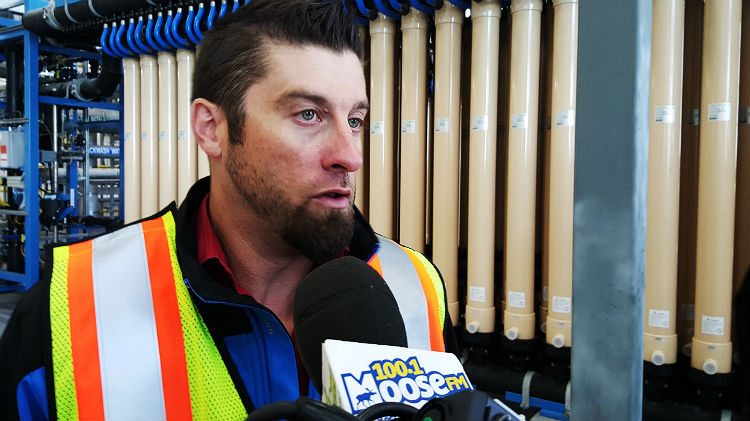Does drinking water drawn from Yellowknife Bay, within sight of the remains of Giant Mine, concern you?
Or would you happily have the city draw its water from that bay, saving millions of dollars by abandoning the costly replacement of an ageing pipeline to Yellowknife River?
Right now, almost all of the city’s water comes from the river via an eight-kilometre pipe built in the 1960s. That pipe is slated for replacement by the year 2020, and estimates suggest that will cost $20 million.
“We’re approaching the end of the pipe’s useful life,” Chris Greencorn, the city’s director of public works, told reporters on Monday as they toured Yellowknife’s new water treatment plant.
Photos: Explore Yellowknife’s $30 million water treatment facility
“City administration and council have to take steps now to start preparing for its replacement.”
But replacing the pipe is not the only option. Shutting down the pipe entirely, and drawing water from Yellowknife Bay, is an alternative.
However, that’s where concerns about Giant Mine come in. A $1 billion, decades-long project to clean up arsenic trioxide byproducts from the former gold mine is only just beginning.
With that in mind, some residents – and previous councils – have been reluctant to see the city rely on nearby water.
“Because of the pressures, the location of Giant and the tailings ponds, the public perception has always been to keep it at the river because it’s upstream [of the mine],” said Greencorn.
“If there was a release at Giant, at least our water source is upstream of that potential release.”
There is no suggestion that any release of toxic material from Giant into the bay is imminent, nor likely. Furthermore, the city has drawn water directly from the bay in the past when necessary – and says there is no difference in water quality.
‘Pros and cons’
To further set minds at ease, the city has left room at its new water treatment plant for a dedicated arsenic treatment facility to be built in future.
If city council one day decides to shut down the old pipe and draw directly from the bay, Greencorn believes the relevant arsenic treatment equipment – just in case of an incident – would take at least two years and $5 million to install. That’s still substantially cheaper than replacing the pipe.
“From a strict design and financial perspective, we believe it’s more fiscally responsible to draw from the bay,” he said.
“But that’ll be a council decision. Any time they ask, we’ll put forward the pros and cons of each scenario. There are definitely benefits and drawbacks associated with both.
“If you’re looking at dollars and cents, the bay makes more fiscal sense – but sometimes that’s not always how decisions are made.”




